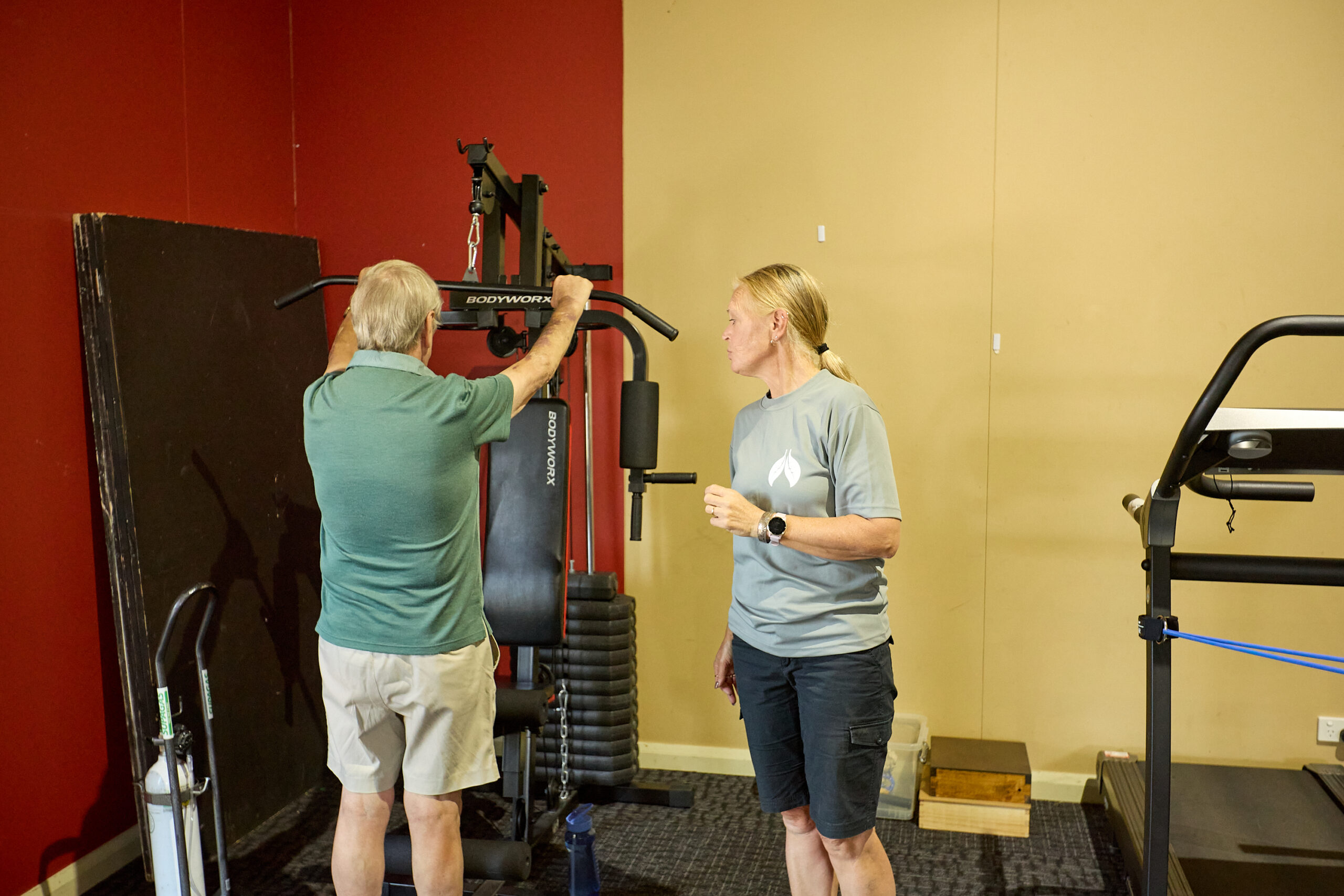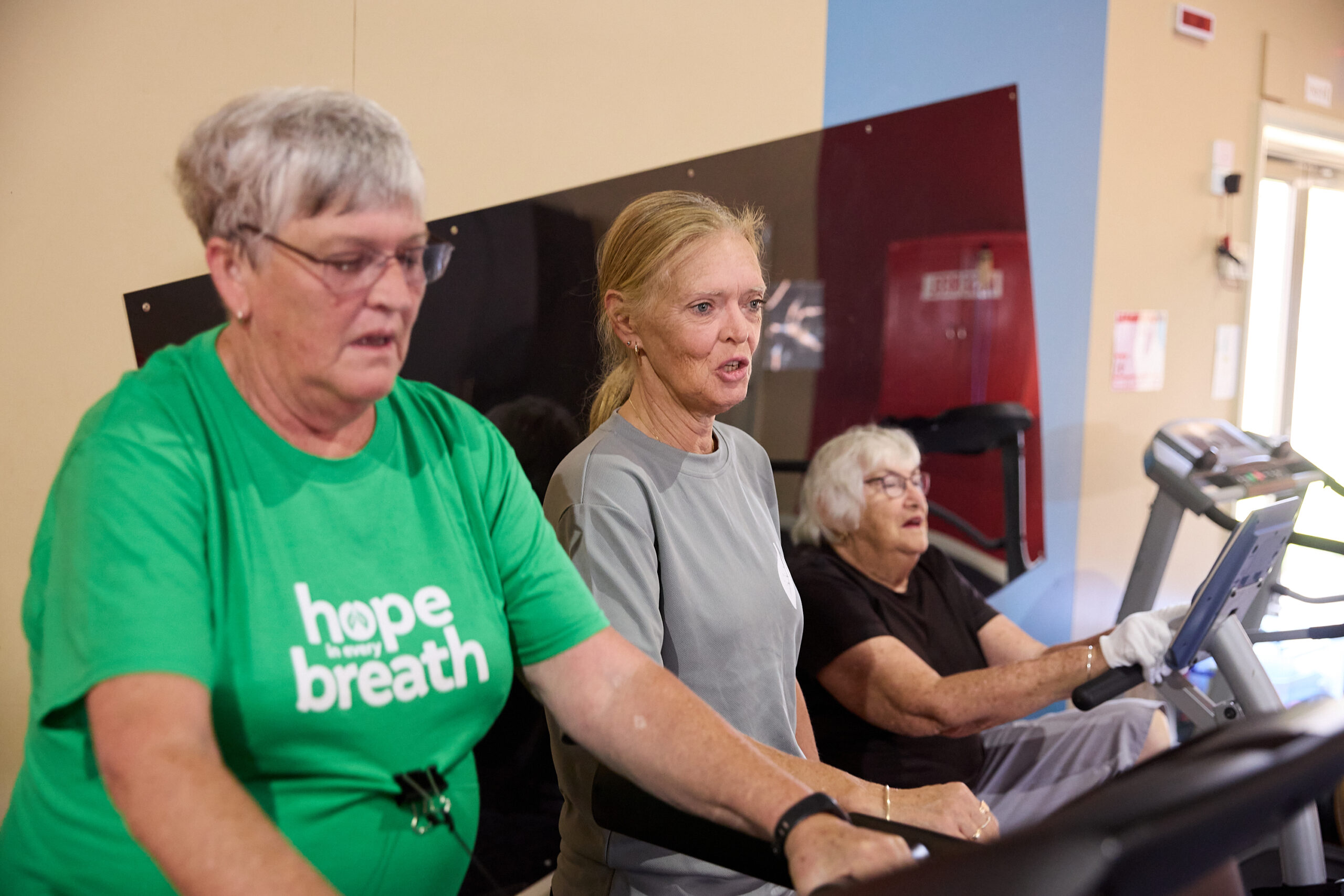Can I offer this program?
There are five essential components of a pulmonary rehabilitation program:
- Patient assessment
- Patient exercise training
- Patient education
- Patient reassessment
- Maintenance

Personnel and Equipment
Personnel
The minimum staff requirement for a pulmonary rehabilitation program is a health professional who has the expertise to conduct exercise testing and training for people with lung disease, such as a Physiotherapist or Accredited Exercise Physiologist, who is competent in cardiopulmonary resuscitation.
For the educational component of the program, a multidisciplinary team of health professionals may be involved. The team may include a physiotherapist, exercise physiologist, dietician, occupational therapist, psychologist, pharmacist, social worker, specialist nurse, physician or other health professionals. However, where such a team is not available an exercise program should still be offered.6
The COPD Online Patient Education (COPE) program has been developed to enable patients who do not have access to a pulmonary rehabilitation program to be able to undertake the educational component of pulmonary rehabilitation from the comfort of their own home. This easy to use, interactive and informative program can also be used to complement a pulmonary rehabilitation program or simply as a reference point for information on living with a lung disease.7
See www.cope.lungfoundation.com.au
Staff-to-Patient ratio for exercise training
There are no current guidelines on the most appropriate staff-to-patient ratios for conducting pulmonary rehabilitation exercise sessions. Staff-to-patient ratios of between 1:4 to 1:8 have been reported.1 Patient safety and the complexity of the patients conditions are the most important factors when determining this ratio.

Staff Time Commitments
2x 60mins/week for supervised exercise, X mins allocated to staff planning, booking patients, patient assessments, letters to referrers etc.
Facility and Equipment
The essential requirement for a pulmonary rehabilitation program is a space for patient assessment that includes a level corridor or walking track suitable to carry out a field walking test for exercise assessment. For exercise training, the area needed is a gym or large room, and an indoor or outdoor track for walking training. The table below lists the equipment required to conduct a pulmonary rehabilitation program.8
| Minimum Requirements | Additional Options | |
|---|---|---|
| Monitoring |
|
|
| Exercise |
|
|
| Safety |
|
|
| Other |
|
|
* these adjuncts should only be performed by staff with advanced training in a centre-based setting
PPE – Personal Protective Equipment


